
LIVING A LIFE
OF BALANCE

FOREWORD BY
MARILYN
MEBERG

Copyright 2005 Thomas Nelson, Inc
The publishers are grateful to Christa Kinde for her collaboration, writing skills, and editorial help in developing the content for this book.
All rights reserved. No portion of this book may be reproduced, stored in a retrieval system, or transmitted in any form or by any meanselectronic, mechanical, photocopy, recording, or any otherexcept for brief quotation in printed reviews, without the prior permission of the publisher.
Published by Thomas Nelson, Inc.
P.O. Box 141000, Nashville, Tennessee, 37214.
Thomas Nelson, Inc. titles may be purchased in bulk for educational, business, fund-raising, or sales promotional use. For information, please e-mail SpecialMarkets@ThomasNelson.com.
Scripture quotations marked NKJV are taken from The Holy Bible, The New King James Version, copyright 1979, 1980, 1982, 1992, Thomas Nelson, Inc., Publishers. Used by permission. All rights reserved.
Scripture quotations marked NLT are taken from The Holy Bible, The New Living Translation. Copyright 1986 by the Tyndale House Publishers, Wheaton, Illinois, 60189. Used by permission. All rights reserved.
Scripture quotations marked MSG are taken from The Holy Bible, The Message, copyright 1993. Used by permission of NavPress Publishing Group. All rights reserved.
ISBN-10: 0-7852-5263-0
ISBN-13: 978-0-7852-5263-4
07 08 09 PP 09 08 07
 CONTENTS
CONTENTS 


I went through a phase of motherhood, which to me, seemed wise, nurturing, and imperative. My husband, Ken, called that period Marilyns stone-ground, sugarless phase. I was convinced the only way to ensure the health and well-being of my family was to avoid as much processed food as possible. Therefore, I made my own bread from stone ground whole wheat flour available to me from Knotts Berry Farm where the old grist mill was still in daily operation. I made my own yogurt, was fanatical about fresh fruit and vegetables, and of course, sugar was an unknown staple in my kitchen.
Now I must admit with blackstrap molasses as the only sweetener Id consider using, my food could be described as bracing. But I felt enormously gratified that I was seeing to the nutritional well-being of my family even though there was limited encouragement of my efforts.
One morning, Mary, one of my neighbors, dropped by for a cup of tea (straight, no sugar). I was stunned when she told me that my children were going from house to house asking if there were any available cookies they might snack on. Everyone in that little cul-de-sac knew my food philosophy and felt sorry for my children. Apparently there was an unending supply available for their little sugar-deprived bodies. Mary told me Jeff was especially partial to Mystic Mint Cookies, so she made sure she always had some in her pantry.
In those days no one had heard of staging an intervention for those who would benefit from such a truth-filled encounter, but in essence, that was Marys purpose in dropping by for tea. I needed a touch of truth. At first I felt slightly betrayed by my neighbors, but as I thought more about it, I wondered if my food philosophy was a little out of balance with the world around me. It was certainly out of balance with my neighbors.
As I was discussing it all with Ken that evening (the intervention day), he said that there were times when he wondered if a loaf of nutrition-laden bread might not make a better door stop than breakfast food. I began to giggle over that image. I asked him why he had never said anything to me. He said, Because your heart was so right and your intentions were so pure that I didnt want to say anything. Besides, I figured the kids would mutiny sooner or later anyway and then we could talk.
We had a little family counsel meeting that night and discussed that I was committed to my nutrition program, but I assured everyone I could compromise some. I agreed to Mystic Mints in the pantry (no more than two a day) and we had a little funeral service for the remaining blackstrap molasses. I continued to make my stone ground whole wheat bread, eliminating not only the molasses but the Brewers Yeast as well, which lightened it up and made it much tastier. My family congratulated me.
Ken grew up in a Norwegian-dominated section of Seattle. Mrs. Walvick, who lived next door to his family, was a colorful little lady with predictable patterns and inflexible food habits. Every Saturday morning, she went to her special Norwegian bakery where she would buy bread, rolls, and cold cuts for Saturday night sandwiches. Every Saturday morning, shed lean into the butchers ear for the usual instruction regarding the slicing of her cold cuts. Not too tick and not too tin, shed whisper and step back, confident the butcher knew exactly what she expected from his slicer.
On the night of our family chat that challenged me to lighten up on my nutritional program, I told Ken that Mrs. Walvick served as an inspiration for me. The not too tick and not too tin instruction to the butcher could serve me well. Mrs. Walvick wanted balance for her cold cuts. That was achieved by not going too far in either direction. A touch of Norwegian wisdom warmly inspired me to check my own tick or tin. Now before we close the subject of my health food inclinations, I will simply say that I still prefer stone ground whole wheat bread, fresh fruits, and vegetables, but a little chocolate has a way of making it all worthwhile, especially a Mystic Mint Cookie with my afternoon tea.
When we consider the life of Jesus and the example He left us, would you say He was careful about not too tick and not too tin? Do you think He was balanced? You will remember He sometimes moved away from the clamoring needs of the crowd so that He might be alone; that meant many needs went unmet. He also ate with disreputable people and spent time with persons rejected by their own society. Did Jesus go too far in preferring the company of sinners? Did He spend too much time alone and in prayer?
In this study guide, Living a Life of Balance , you will have the fascinating opportunity to examine your own tick or tin way of being. How do you see your level of balance? How does it measure up to the example we have of Jesus life and the Bibles encouragement for each of us to live lives of balance? Sometimes we need to be encouraged by others to see ourselves as we really are. (I most definitely needed that from my neighbor, Mary.)
In whichever way you choose to evaluate yourself as you begin your balance study, do know that it is wonderfully possible to give a little, add a little, and rest a little. God means for you to live in equilibrium and balance. How do I know? Ive been working on it for years. God meets me where I am even if Im occasionally a bit more tick than tin.
Marilyn Meberg


Mobiles. Whether constructed from pipe cleaners and yarn, or copper tubing and glass balls, theyre pieces of art. A mobile is a pretty affair, strung together with care, its parts in tenuous equilibrium, and hung where it can be gently moved by passing air currents. It suspends from a single point, but gradually fans out to include a complex array of items, each poised upon its own thread. The secret to a good mobile is balance. Each piece is placed in careful conjunction to the others, so that they offset each other. They hang in a pretty symmetry, delicately balanced. If you were to take away just one bauble from this painstaking arrangement, the whole mobile would hang askew. Balance would be lost. And if you tried to add something new to the array, it would wobble off kilter. Balance would be lost again.
Next page
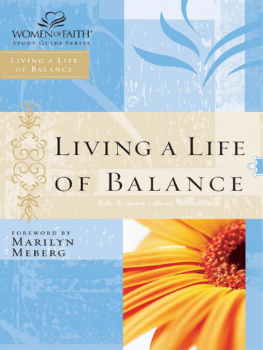




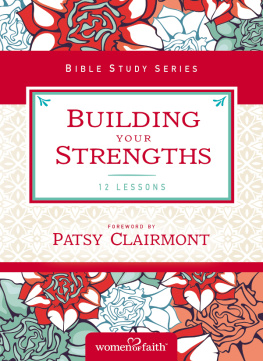



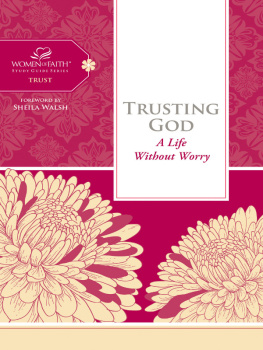
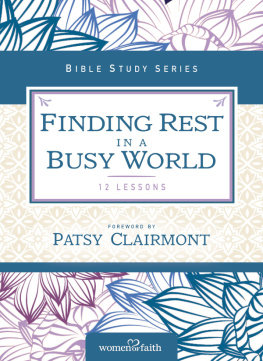

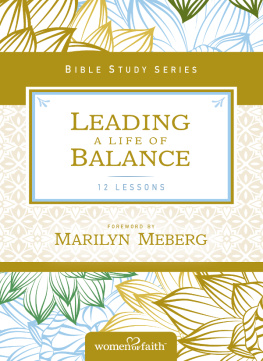
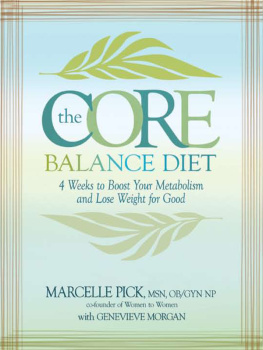


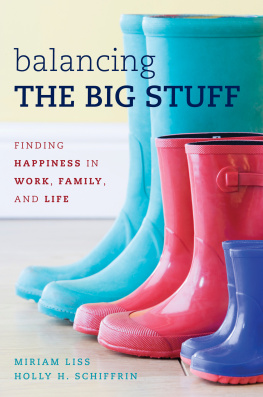



 CONTENTS
CONTENTS